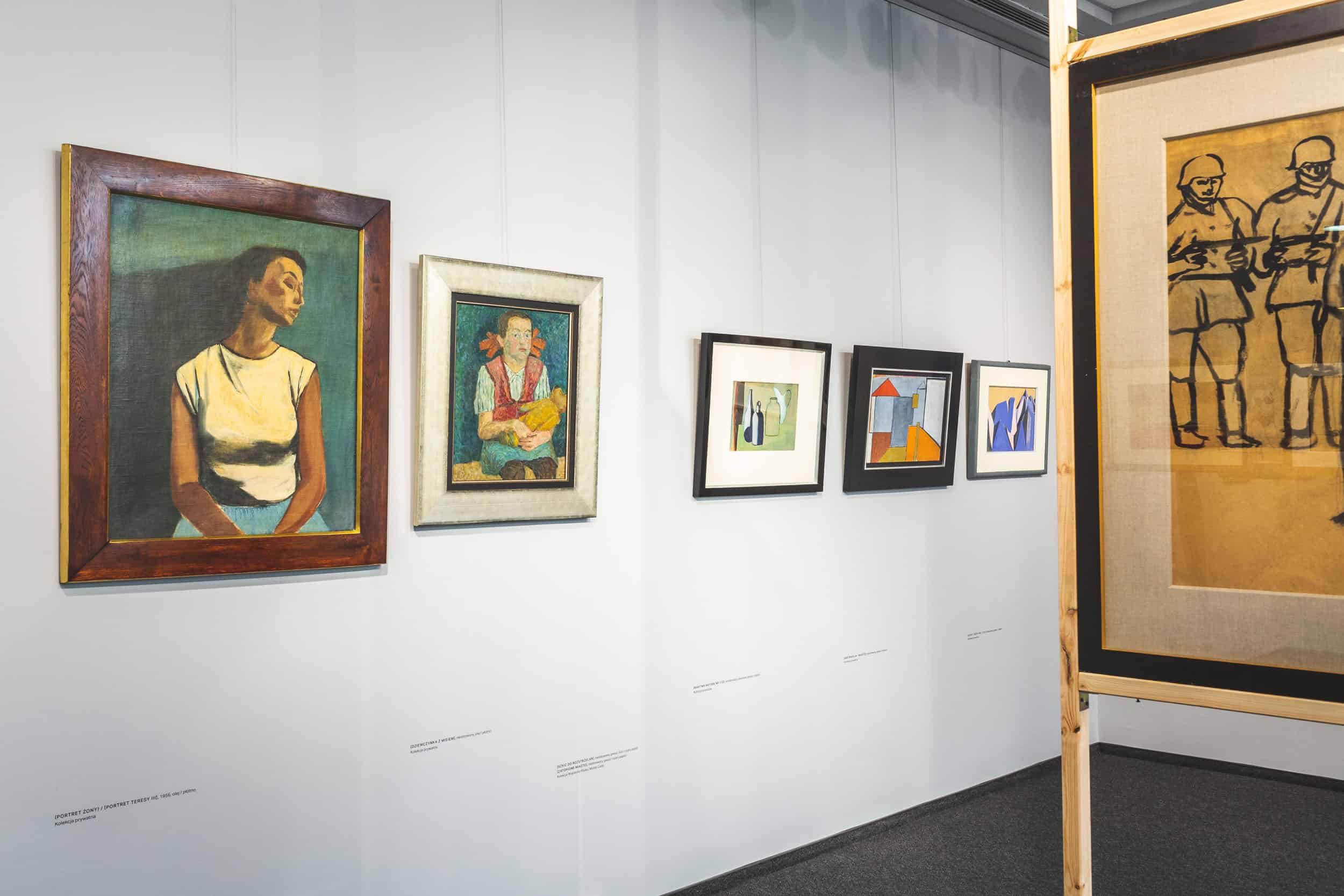Andrzej Wróblewski, Collectors Show, Libra Auction House
Why do we collect art? Is it for ourselves? For our children? Is it an investment, a desire for ownership or some unrelenting need to remain in close vicinity to one’s revered work of art? There are surely as many answers as there are collectors.
“The art is a common good which belongs to the society no matter who is it’s actual owner”
(Werner Jerke, collector)
The experience of art is a significant component of our social and cultural life. We go to art shows staged in public institutions, galleries, pop-ups and artists’ own studios. What about auction houses? Popular opinion reduces their role only to an organisation of the auctions. You visit this sort of establishments with a sole intention to buy works of art. It’s the place of business. Nowadays, auction houses are gradually shedding this dismissive image. They demonstrate their openness towards the audiences, willingness to offer advice and expertise on the artists. Another shift is set in motion by the conviction that “the greatest works of art should be available in public as well as private institutions” – Iwona Wojnarowicz, an executive director at Libra Auction House, said when we met in Warsaw owing to a non-commercial presentation of the works by one of the most prominent Polish artists of the 20th century – Andrzej Wróblewski. The auction house accumulated some of the most extraordinary pieces placed in ten private collections. So, the exhibit allows us to view the works hanging on the walls of other people’s estates. It seems worth pointing out that the most recent art show with such ambitions organised in a commercial space in Europe was held in the London-based David Zwirner Gallery (2018). The enthusiasts of Wróblewski’s artistic oeuvre mustn’t let this unique opportunity slide. The show includes a broad spectrum of not only oil and gouache paintings, but also ink drawings that he created immediately after relocation from Vilnius to Kraków and during his studies at the Academy of Fine Arts in Kraków. Also, the exhibition in Warsaw features Wróblewski’s sketches, deeply personal family portraits, drafts for his most famous art series entitled Executions (Rozstrzelania).

Andrzej Wróblewski, Collectors Show, Libra Auction House
We can also see his series of gravestones (Nagrobki) in which he depict the tragic nature of human existence. In the wake of his visit to Yugoslavia in 1956, Andrzej Wróblewski decided to channel his fascination with its graveyards into a series of incredibly precise drawings. The tombstones themselves became the main motif, while the inspiration originated from their simple geometric forms enveloping human silhouettes, the shape of a cross and tombstone’s segments – all these elements aligned perfectly with Wróblewski’s pursuit of a simultaneous abstraction and figuration, his synthesis of form, symbol and sign to conjure composition and content in his subsequent works. The symbolic potential of the series is reinforced additionally by the mysterious and tragic death of the artist in the Tatra Mountains only a couple of months later (on the 23rd of March, he was found sitting under the tree by the lake Morskie Oko situated near the highest mountain on the Polish side of a border. Initially no one was alarmed by sight. Wróblewski was pronounced dead in the evening. He was only 29 years old. Epilepsy is cited as the official cause of death. However, his body was wounded. He was wearing two pairs of pants – pyjama bottoms and top skiing pants).

Andrzej Wróblewski, Collectors Show, Libra Auction House
The motifs of death and trauma processing appear in Wróblewski’s other works from various periods in his practice, including the most famous series Executions which can be regarded as the pinnacle of his symbolic predilection. Monumental figures are squeezed right next to one another. The gaze of these statues is directed at something far ahead, their fists clenched. They stand upright, straight as an arrow. They wait for something. Children cling to their parents, a couple holds hands firmly. They stay still awaiting death. The static composition is disrupted by only one individual whose arms are dramatically thrown high up in the air. This figure has no shadow. It’s turned backwards. It’s no longer part of this world. The execution was carried out already…

Andrzej Wróblewski, Collectors Show, Libra Auction House
In his art practice, Andrzej Wróblewski struggled to come to terms with his unsettling memories and issues. Through art, he unravelled and absorbed the complexity of the world – the world which is as horrifying as it is perhaps beautiful. The world filled with love and kinship, nature and star-spangled sky at night. The latter quality emanates from some of Wróblewski’s other works exhibited in the Libra Auction House (Kitek with a Ball, Figural Composition No. 764, Portrait of the Artist’s Wife, Landscape, Sunken City). Let’s stop for a second and immerse ourselves in Wróblewski’s own world. Soon, all these pieces will be returned to their rightful owners. This might be your once in a lifetime opportunity.











